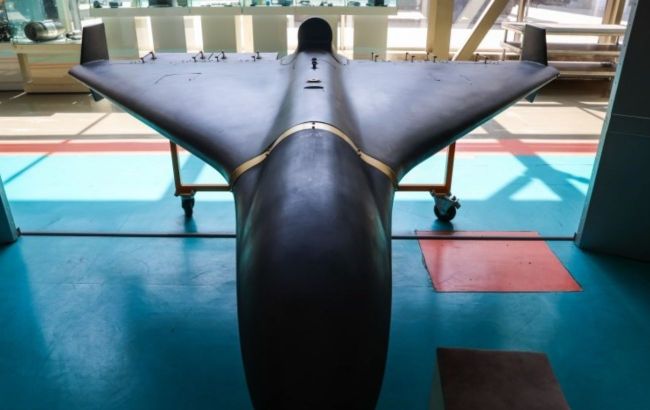Russia won’t be able to fully switch to jet-powered Shahed drones: Expert explains why
 Photo: jet-powered Iranian UAV Shahed-238 (wikipedia.org)
Photo: jet-powered Iranian UAV Shahed-238 (wikipedia.org)
Russia has started using jet-powered Shahed drones in attempts to strike Ukraine. However, a full transition to them is unlikely — they are too expensive, aviation expert Valerii Romanenko shared this in a comment to RBC-Ukraine’s YouTube channel.
According to the expert, jet-powered Shaheds are significantly more expensive than the "traditional" Iranian drone copies. For instance, the minimum cost of an engine for a jet-powered Shahed is around $40,000, while the engine of a conventional drone costs about $15,000.
"So it’s roughly three times more expensive. Accordingly, the structure needs to be reinforced, the equipment is slightly different, and overall, this drone will be at least about two to two and a half times more expensive," he explained.
Russian forces aim to "take out of the game" Ukraine’s mobile fire teams, which, in the enemy’s view, are a highly effective component of the country’s air defense. They believe this can be achieved by using jet-powered drones.
However, there’s a key detail Russian generals are overlooking: jet-powered Shaheds leave a heat signature. And mobile fire teams are equipped not only with machine guns but also with man-portable air-defense systems (MANPADS).
"In addition, we’ve received a significant number of Western fighter jets armed with Sidewinder missiles. If there’s a shortage of Sidewinders, there are Mirage 2000 fighters with Mica missiles, which also use infrared guidance. They, too, can engage these jet-powered Shaheds," Romanenko noted.
Therefore, according to the expert, jet-powered Shaheds may be used only as an additional drone type to complicate the work of air defense systems. But due to their high cost, it is unlikely the enemy will fully switch to jet propulsion.
Interior Minister Ihor Klymenko said Russian forces likely used jet-powered Shaheds during the attack on Kyiv in the early hours of July 31. Ukrainian Air Force spokesperson Yurii Ihnat also confirmed this, stating that these drones are rather difficult to detect.
In addition, earlier this week, First Deputy Prime Minister and Minister of Digital Transformation Mykhailo Fedorov said during the national telethon live broadcast that the Russian military is already integrating various technologies that allow Shaheds to bypass Ukrainian drone interceptors.

